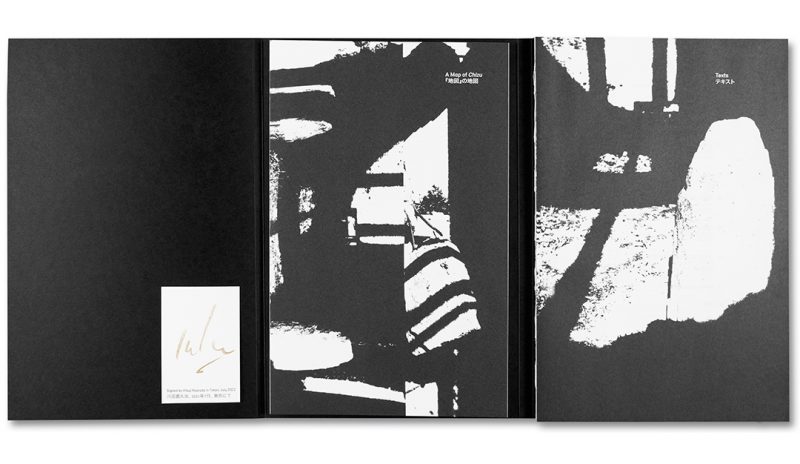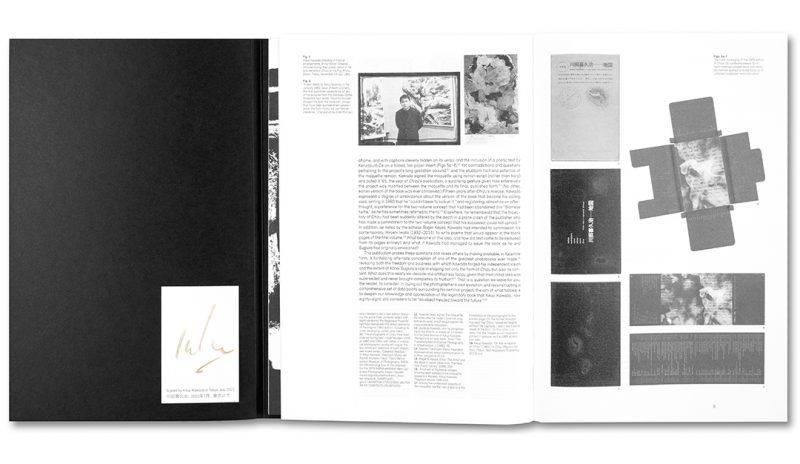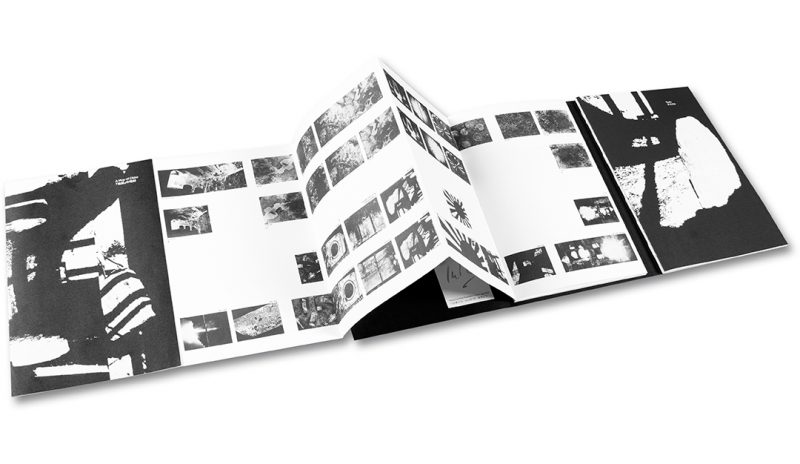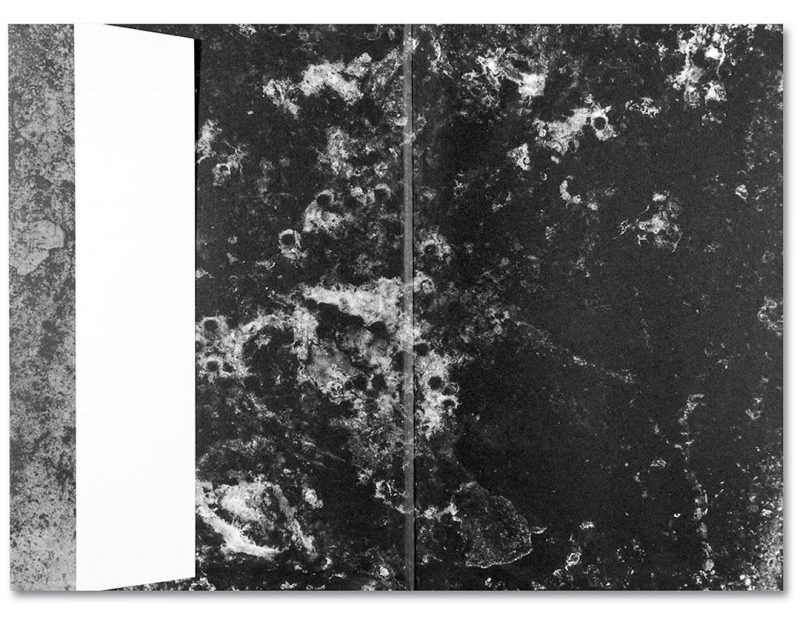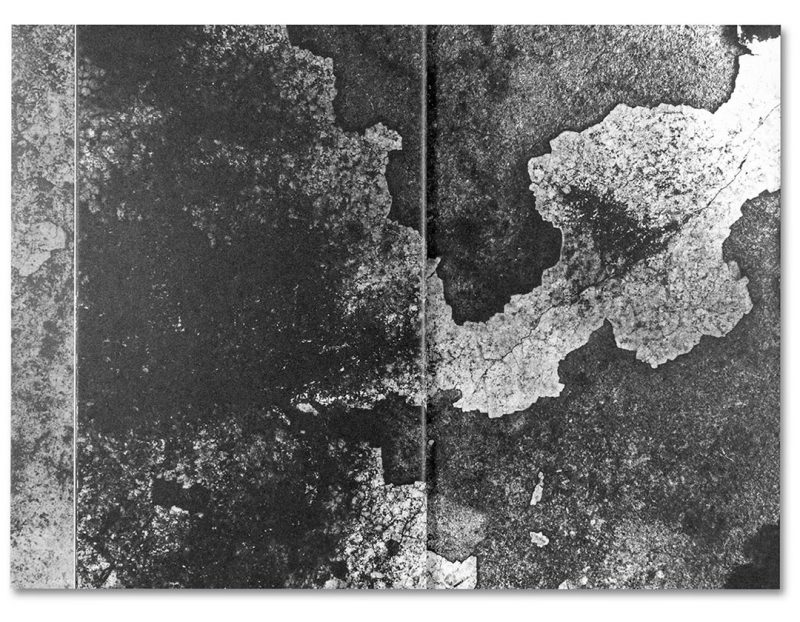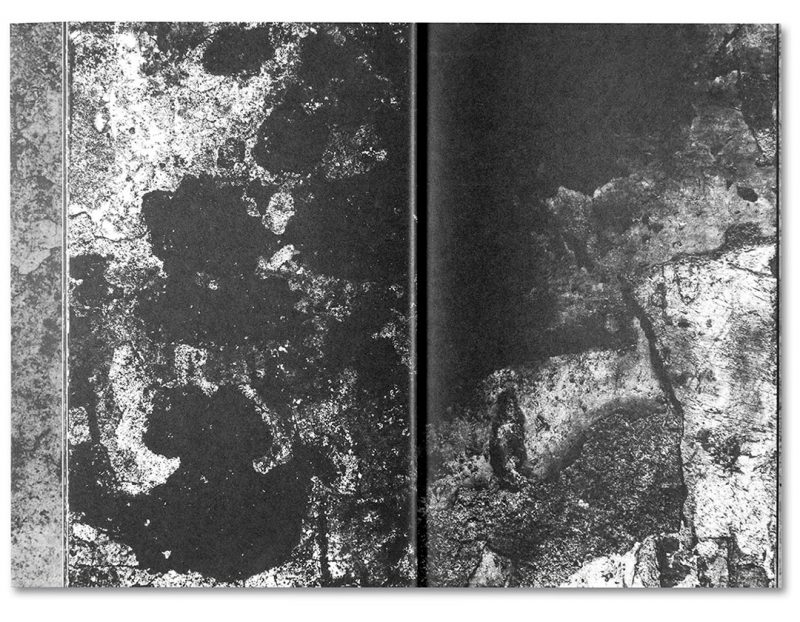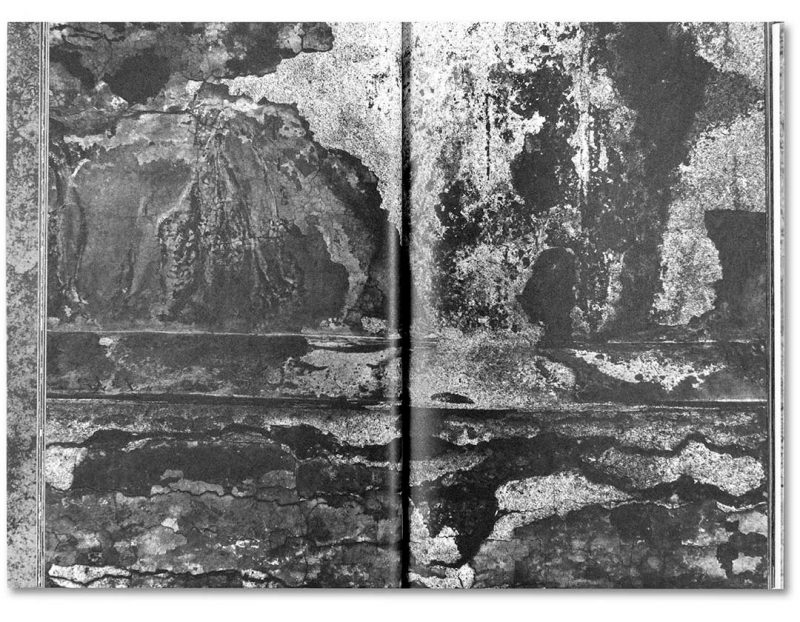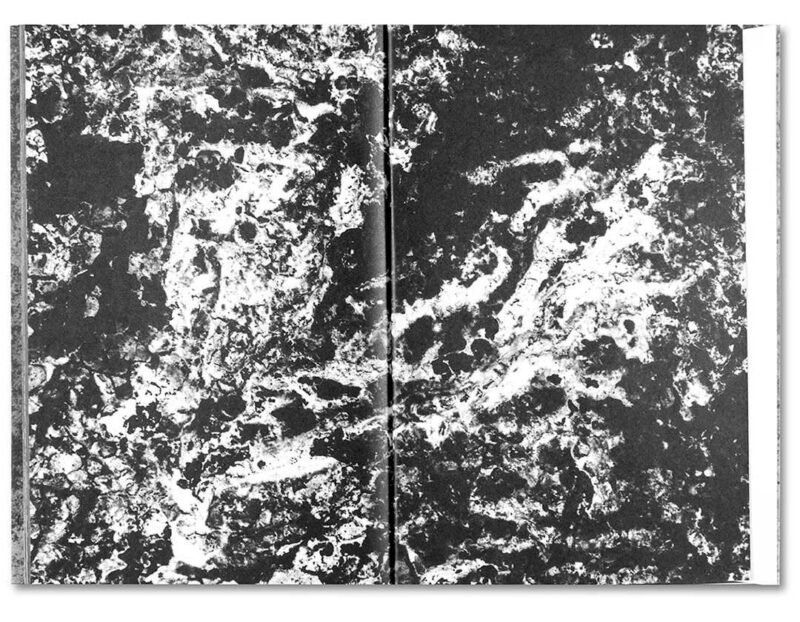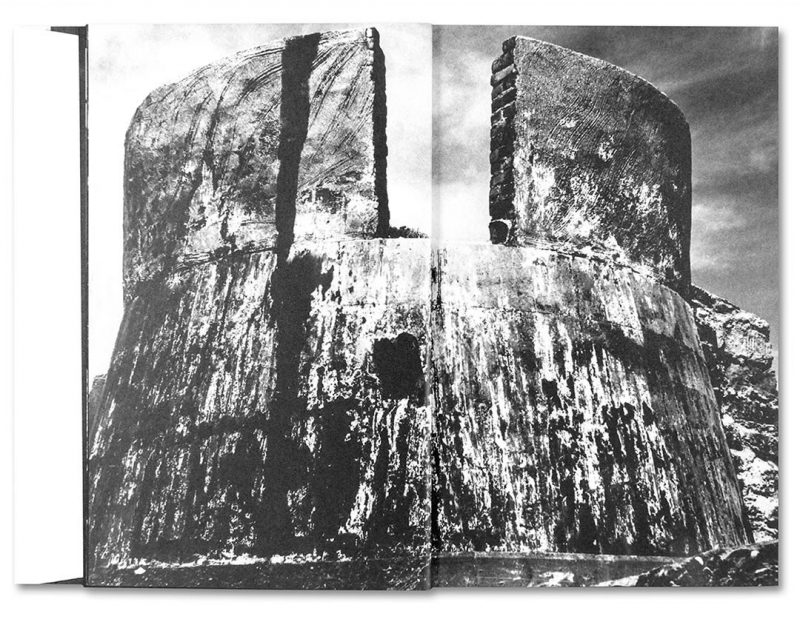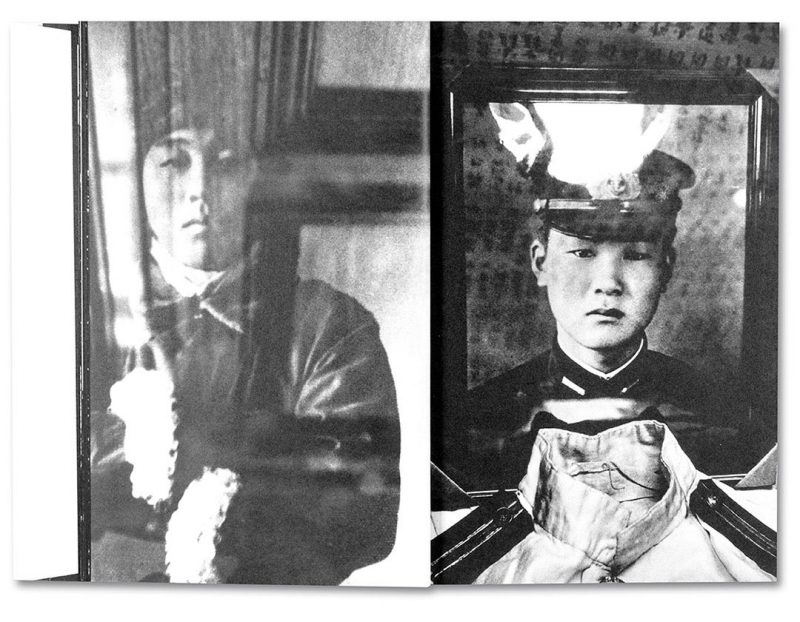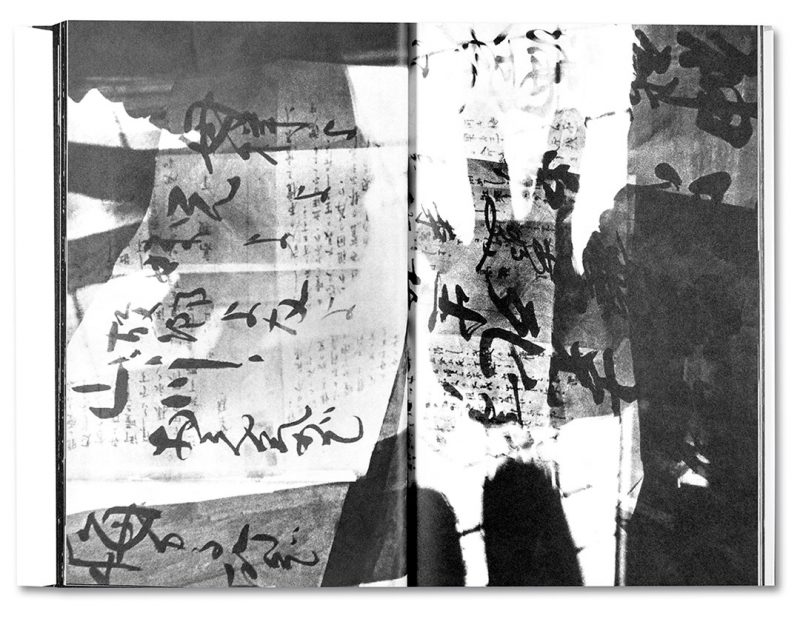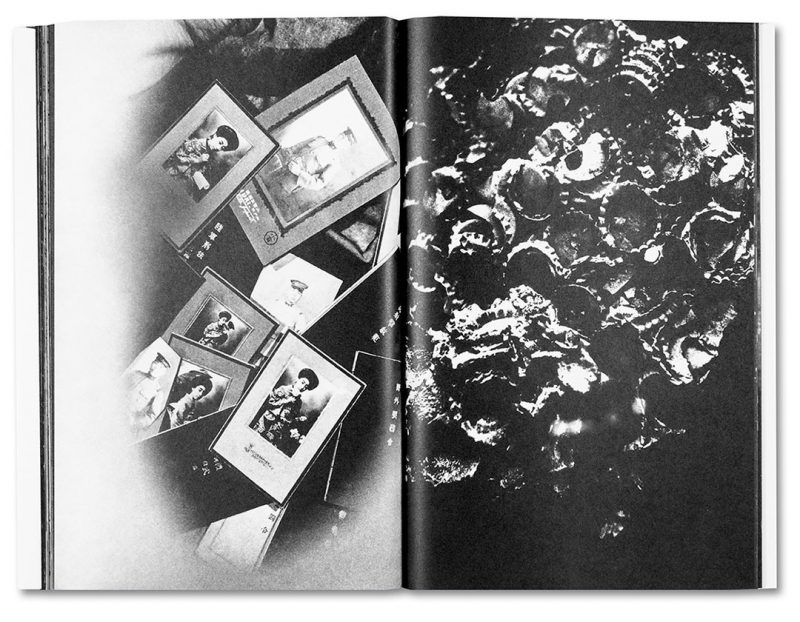[April 21, 2022]
By Louis Perreault
Kikuji Kawada began to work on Chizu in 1958, when he went to Hiroshima for the magazine Shūkan Shinshō to photograph Ken Domon, who had just published a book titled after the ill-fated city.1 In the evening following the official photoshoot, Kawada found himself in the Genbaku Dome, one of the few buildings not to have been completely destroyed in the atomic bomb explosion in 1945. “Inside, it was damp, dark, there was a strange smell … My eyes took a moment to adjust before I noticed the stains. It was an unspeakably powerful moment. I felt like I had encountered this terrifying, unknown place. I had the illusion that I could almost hear faint voices merged with the wind and crackling sounds coming out of the walls.”2
Since its original publication in 1965, Chizu has remained an object shrouded in the mystery of the inaccessible. Many see this photobook about the horrors of the Hiroshima atomic bomb, in which the ruins of the Genbaku Dome play a central role, as a masterpiece of the genre, “the ultimate photobook-as-object.”3 Part of the first edition, estimated at seven hundred copies, was burnt during the 1968–69 student protests at Tokyo University, thus limiting its availability to readers. There have been a few reprints of the book in its original form designed by the great Kōhei Sugiura.4 However, it is still so rare that it is coveted by collectors.
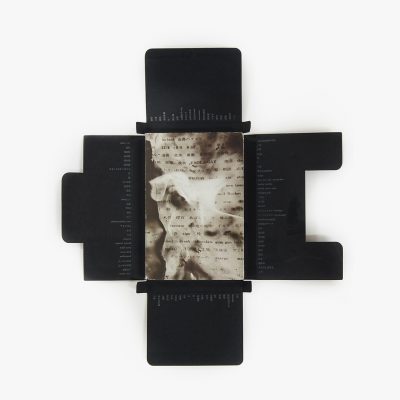
Kikuji Kawada (photos) & Kōhei Sugiura (design), Chizu, 1965, Bijutsu Shuppan-sha (édition originale / original edition), photo: ©️Kikuji Kawada, permission / courtesy PGI
The original version of Chizu is presented in a cardboard box, from which one removes a printed hardcover folder to reveal the book wrapped in its protective dust jacket; it is a unique handling experience. Its “normal” double pages alternate with gatefolds that open wide horizontal panels with images that are hidden when they are folded. The sequence of photographs immerses the reader in a series of high-contrast images, some of which venture into abstraction even as they show the details of the interior walls of the Genbaku Dome. The cracks and textures on the walls, photographed in tight frames, are intermingled with images of various subjects referring to the horrors of war: archival portraits of young kamikaze fighters and fragments of letters written before final missions; metal objects of all kinds and a crushed Japanese flag on the ground; uncapped Coca-Cola bottles and stacked televisions – in short, a multitude of visual traces of a bruised and battered world, presented in a highly experimental form that expresses the fear caused by the brutal impact of the bombs and the sadness following the resulting losses.
Held by the New York Public Library since 2001, the original maquette of Chizu is now on public display, thanks to the initiative of art historian Miyuki Hinton and curator Joshua Chuang, until recently director of art, prints and photographs at the NYPL. Interested in showcasing the Japanese works held by the library, Hinton and Chuang undertook extensive research that resulted in a significant update to the history of the famous work.5 They started the project in 2017, when the library acquired an extensive archive on Nagasaki and Hiroshima. The desire to highlight Japanese works and the sudden availability of this archive about the events of 1945 naturally brought their focus onto Chizu.6 They approached the English publisher Michael Mack, and in 2021 a luxury edition of the maquette was published, consisting of a facsimile of its two original volumes and a beautifully designed booklet containing an interview with Kawada, a detailed chronology of the development of Chizu, and a leporello-bound pamphlet showing how the photographs were used differently in the two versions of the work.
The maquette of Chizu differs radically from the published book, primarily because of its two-volume design, but also because of several resulting distinctions, the most obvious of which is that it has been completely stripped of its gatefold pages. Furthermore, the maquette separates the abstract images (gathered in the first volume) from the figurative photographs showing the various objects, portraits, and details (gathered in the second volume). The result is an interplay between the two units, forcing the reader to decode the different bodies of work and to forge thematic and formal connections among images that use very different visual languages to express the tragic sense of the 1945 event. In the process, the young faces of soldiers portrayed in their official clothes find a curious echo in the blackened stains on the walls cracked by the bomb. Although there is no doubt that the original publication provides an extraordinary aesthetic experience, there is something unusual and unsettling about moving from cover to cover through the first volume of the maquette. As Hinton observes, “The psychological impact of the artist being in this space becomes part of the viewer’s experience of the work, and once captured, the idea of the place in which the work is made becomes the work itself. The Atomic Bomb Dome becomes an abstract space where memories are untouched by the passage of time, not to mention shifting perceptions of defeat and victory.”7 In short, gathering together the abstract photographs of the dome walls enhances the book’s already hypnotic impression.
Given the differences between the two versions, one may wonder what triggered such a change in form. A clue is given in an essay written by Sugiura and published in a monograph dedicated to him. In it, he describes his working philosophy and his overall vision of a book: “[It] embodies the concept of ‘one in many’ and, at the same time, ‘many in one.’ The concept of ‘many’ is reflected not just in the number of pages but also in a book’s many characters, many images, its gathering of many elements, many chapters … and many subjects … Space and time are folded into multiple layers, creating a universe in the shape of a book. In this concept … ‘one’ and ‘many’ are of the same rank, in a mutual relationship as equals.”8 Would it not have been more in line with Sugiura’s philosophy to integrate the images into a single book, which constantly opens and unfolds, sometimes revealing a recognizable and poignant detail, at other times showing an abstract stain on the concrete, forcing the heterogeneous into a unified whole? The maquette and the supporting research do not offer a clear answer to this question (Sugiura is often referred to, but his own account is not included in the book), but Kawada’s explanation of his choice of title (chizu translates to “map”) is enlightening: “A map represents the spiritual and psychological landscapes of a certain period. While it is a flattened two-dimensional location, it is also multi-dimensional.”9
This use of metaphor opens Kawada’s work to a multiplicity in which the detail is “one” – specific, precise, unique – and yet refers to the “many,” as the cumulative effect of the images is one of the driving forces behind our emotional and intellectual understanding of the work. In a photobook such as Chizu, the photographs are never alone, individualized. They collide and meet; they add up and refer to each other. Are the images in the first volume of the maquette so different from the subjects presented in the second volume? Can we talk about abstraction when we are shown something so specifically? After all, if we pay attention, we discover the real and detailed world of the Gembaku Dome. Furthermore, aren’t these supposedly figurative images just as abstract? The face of the young kamikaze, which we discover in one of the archival portraits partly veiled by the reflection on the glass, refers as much to the person he was before the war as to the fate that he shared with his companions in combat and misfortune. The “one” becomes the “many,” and the “many” are embodied in “one.”
Can these thoughts explain the choice that was made in favour of the gatefold design? Was it better suited to embody this multiplicity concretely, through the overlapping pages, the different layers enwrapping the book, and the interweaving of the different types of images that are otherwise separated in the maquette? Almost sixty years after the original publication of Chizu, there is no need to make such a judgment on the artistic value of any of the versions of the work. However, the availability of the maquette allows us to broaden our field of analysis and to better understand the impact of the book’s design on the transmission of its content. Thus, beyond enriching its historicity, the release of this new version opens up broader discussions on the very essence of the photobook. For example: what is the nature of the relationship between a book and the work it presents? How is the book itself distinguished from its contents and how does it ultimately become an independent entity, expressing in itself the meaning that is passed on to the reader? As Chizu shows, these questions certainly deserve more than one form of answer.
Inside the Hiroshima Peace Memorial Museum, a stone staircase once located 260 meters away from the epicentre of the explosion and now moved to the Museum’s premises retains the traces of a person who was waiting for the Sumitomo bank to open on the morning of August 6, 1945.10 This curious mark on the ground, which was said to be the shadow of the person who was atomized, is in fact a quasi-photographic imprint: the intense heat emitted by the bomb discoloured the pavement around the incinerated body. Despite this explanation, it is difficult not to see the tangible presence of a person whose “human shadow etched in stone”11 was left behind in the destroyed city.
Similarly, by turning the pages of Chizu (whether the original book or the two-volume version), we experience something that transcends its materiality. The book leads us to project ourselves into all these abstractions that lay bare the history of the place. Perhaps we’ll shiver for an instant, and if we listen long enough, perhaps we’ll hear the murmur of bygone voices, mingled with the wind and crackling sounds coming out of the walls.
2.Joshua Chuang and Miyuki Hinton, “Conversation with Kikuji Kawada,” in Chizu (Maquette Edition) (London and New York: Mack and New York Public Library, 2021), 12.
3. Gerry Badger and Martin Parr, The Photobook: A History, Volume 1 (London: Phaidon, 2004), 286.
4. Co-published by Nazrali Press (United States) and Getsuyosha Ltd (Japan), 2005; reprint Akio Nagasawa Publishing (Japan), 2014.
5. For an account of this research, see “The PhotoBook Phenomenon: 1999–2021,” an online lecture and panel hosted by the Museum of Modern Art on December 8, 2021, as part of its Forums on Contemporary Photography series. Joshua Chuang and Miyuki Hinton presented their work on Chizu as members of the panel. See https://www.moma.org/calendar/events/7437.
6. Email exchange with Miyuki Hinton, March 13, 2022.
7. Miyuki Hinton, “Tracing the Life that Left a Shadow: Kikuji Kawada’s Making of Chizu,” in Chizu (Maquette edition) (London and New York: Mack New York Public Library, 2021), 27.
8. Kōhei Sugiura, “Asian Dynamism in My Book Design,” In Kirti Trivedi (ed.), Kōhei Sugiura. Graphic Design: Methodology and Philosophy (Mumbai: Asian Design & Art Research Group, 10, https://www.academia.edu/28689470/Kohei_Sugiura_Graphic_Design_Methodology_and_philosophy.
9. Chuang and Hinton, “Conversation with Kikuji Kawada,” 13.
10. See https://hpmmuseum.jp/modules/exhibition/index.php?action=ItemView&item_id=112&lang=eng.
11. Human Shadow Etched in Stone is the title of the piece presented at Hiroshima Peace Memorial Museum.
Louis Perreault lives and works in Montreal. His practice is deployed within his personal photographic projects and in publishing projects to which he contributes through Éditions du Renard, which he founded in 2012. He teaches photography at Cégep André-Laurendeau and is a regular contributor to Ciel variable, for which he reviews recently published photobooks.




